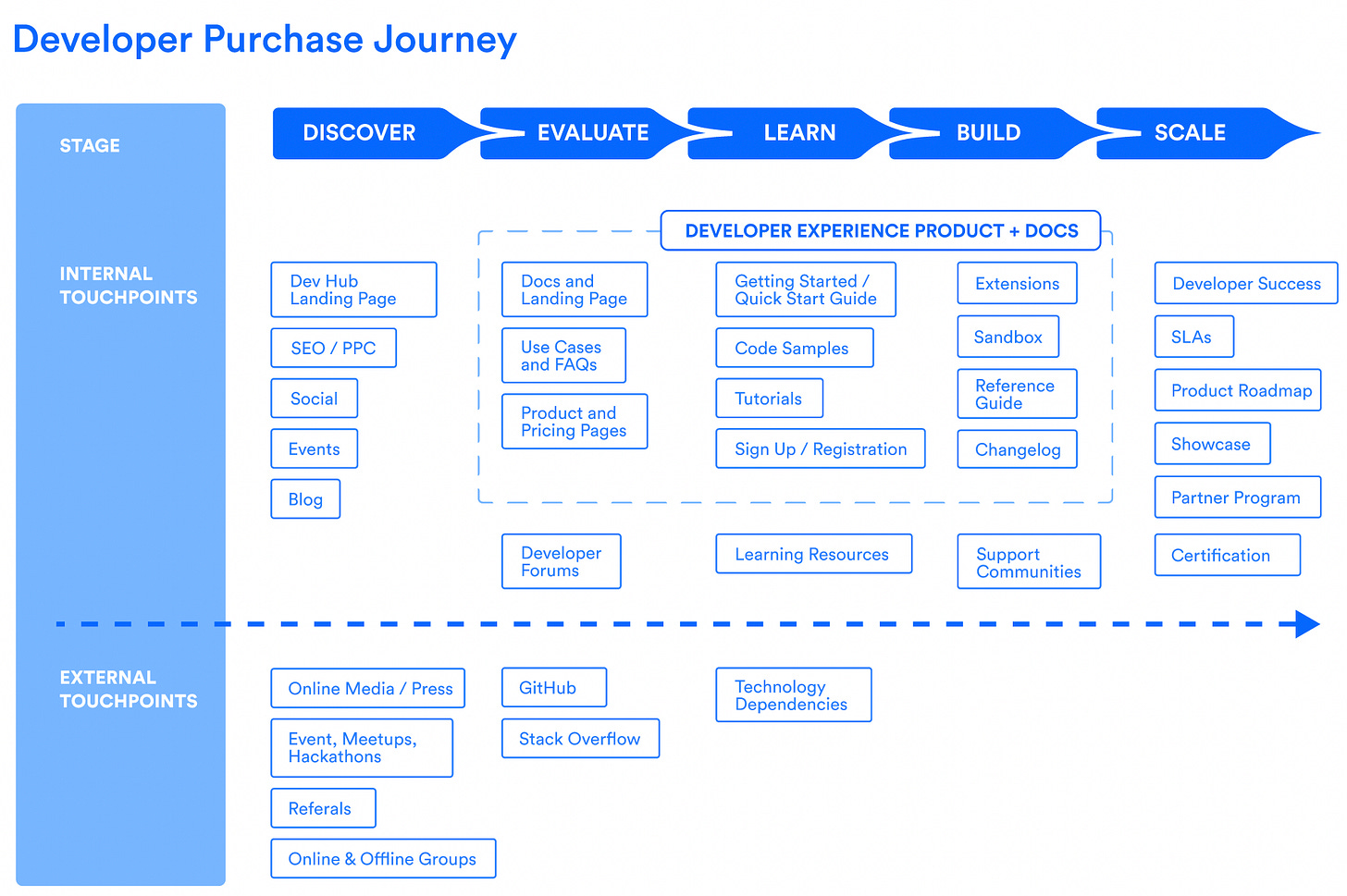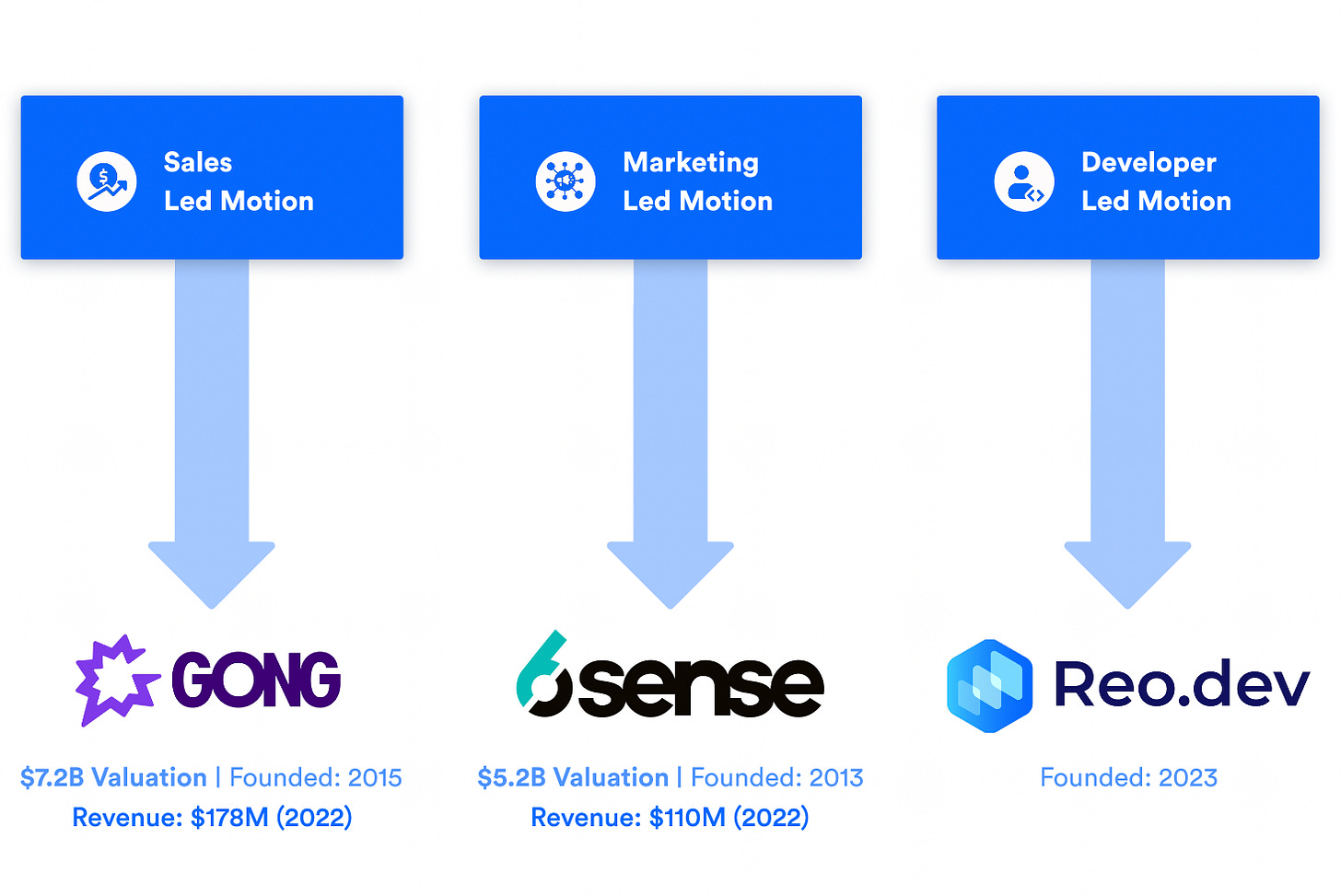Before Reo.Dev, I was working in a Developer Tool company (which was an API product) and was responsible for generating the entire revenue for the organization. But I realised I had no clue of my ‘actual’ sales pipeline since it was very different from the conversational sales pipeline reported by my sales team.
I used to see developers from potential customers asking questions on our discord support community, installing our SDK that we had put on github, using our sandbox, studying our docs, trying out our APIs in Postman collections and this I felt was my true pipeline. Even the C-level executives we spoke to or demoed our products delegated their product evaluation to 1-2 developers in their team and then these 2 developers were as important as the executive to us. But we could never get a complete picture of their product usage as these developers, being in their very nature, did not want to be disturbed by our calls, mails and tell us where they are in the purchase journey.
That is when I discovered that every GTM leader who is trying to sell developer tools is grappling with the same challenge - how to monetise from a developer led motion.
Developer Will Be the New Buyer of the Next Trillion Dollar Software Wave
Think of the last pizza you ate, the car you drove, your last financial transaction. Every industry leader from food (think Domino’s), automobile (think Tesla), retail (think Nike) to banking is transforming into a massive technologies company with a massive need of software to enable developers to build applications quickly. In fact every new technology wave, leads to a following wave of hundreds of Developer Tool companies helping developers to adopt that technology quicker (For example, rise of Fintech led to growth of Fintech Infra; same happened with growth of Web 3 and now Generative AI tools).
There is no doubt that in the coming years we will see many more Developer Tool companies. In fact GGV Capital predicts developer driven software to be the next trillion dollar market after SaaS and Cloud
But the more interesting trend that we see is that the developer is the buyer for this next wave of software. It is an increasing trend in any modern organisation that the decision makers are delegating software purchase decisions to the developers. Developers today are not just creators, but are also massively empowered to either decide or strongly influence purchase decision of software that solves their problems.
A recent survey by Stackoverflow showed 66% of professional developers have at least some influence over their organization’s purchases of new technologies. This is up from 56% in 2020. BCG’s 2022 report shows growing influence of developers in enterprise tech sales. The report shows that Dev team is creating demand for software, shortlisting vendors, testing out the software and even taking the final decision of purchase. This trend is highest in cloud native enterprises but also emerging in companies in early stages of cloud adoption.
But Developer’s Buying journey is Unique and Often Hidden
Developers are informed buyers. They are averse to typical marketing tactics like ads, sales calls, nurture mailers or any other forms of rosy promotional marketing.
A typical developer’s purchase journey starts with a problem that they want to solve. And if they don’t want to solve it by building it themselves, they either research the solution or take the help of people they trust to guide them. Their journeys are very self research driven with intent signals within and outside the product ecosystem that they are trying to evaluate; and involves learning, evaluating and building things before they take their final call.
A lot can be said to describe a developer’s purchase journey, however this map puts it out very accurately.
As you will see, this journey is very different from a typical SaaS purchase journey.
In fact this journey is different from a typical PLG journey as here it is more than ‘try before you buy’ to ‘build before you buy’. For developers, much of the product is outside a sign up, in the docs, guide, sandboxes and open source.
Decoding Developer Led Motion Will Change the Game for Businesses Selling to Developers.
Developers have become one of the most, if not the most, important buyer of developer tools that are building the internet. But when we spoke to dozens of sales and marketing leaders in the developer tool industry, the pain of linking this developer led motion to revenue was visible. We are breaking it down to some of the common problem:
No knowledge of the true revenue pipeline: Today revenue leaders in DevTool businesses lack one view of the deal pipeline. This is because they have developer’s intent signals are across multiple sources, many of them are incognito and to add to it, they are trying to marry their conversational top down deal pipeline to this bottom’s up motion.
We spoke to CEOs and CROs who told us that every morning they try to make sense of their deal pipeline with intent signals across multiple channels such as their slack/ discord servers, their docs, sandboxes and more. We realised that many DevTool businesses have had to build their own custom internal product to solve this since no one solution solved this problem for them.
Monetising their 100s of thousands of their Open Source users: Many DevTool leaders took up a Commercial Open Source strategy to democratise access of their product and bring in massive bottom’s up motion. But now they want tools to help them monetise this motion with their open-core or cloud products.
Many revenue leaders told us that they regularly meet people in developer conferences from potential customer organization who tell them that they have been using their OSS version for a long time. They feel if they had this knowledge they could have tried to nudge them to a paid version that could actually have helped the customer.
Linking their developer community to revenue: Many marketing and revenue leaders in DevTool companies have invested a lot in their developer communities. Now they want to monetise it. Their current set of community management tools help them learn who is engaging in their communities but does not help them convert this knowledge to revenue.
Bottom’s up Dev motion is noisy and lacks signals: Revenue leaders feel their sales and marketing teams are overwhelmed by the noise of thousands of developers signing up, logging into community every month. SDRs are thus wasting time in the wrong inbound leads and growth teams are spending advertising budgets on accounts that will probably not buy.
And this brings us to the mission of helping businesses link their developer led motion to revenue. We feel the way Gong built a successful businesses deriving revenue intelligence from thousands of agent sales calls and emails in a Sales Led Motion; or the way 6Sense built a successful business deriving revenue intelligence from thousands of content based intent sources in a Marketing Led Motion; we will be able to do the same for a Developer Led Motion.
PS: Gaurav, Piyush and I are building Reo.Dev. If you want to try out the product or this is a pain that resonates with you, write to me at achintya@reo.dev.





